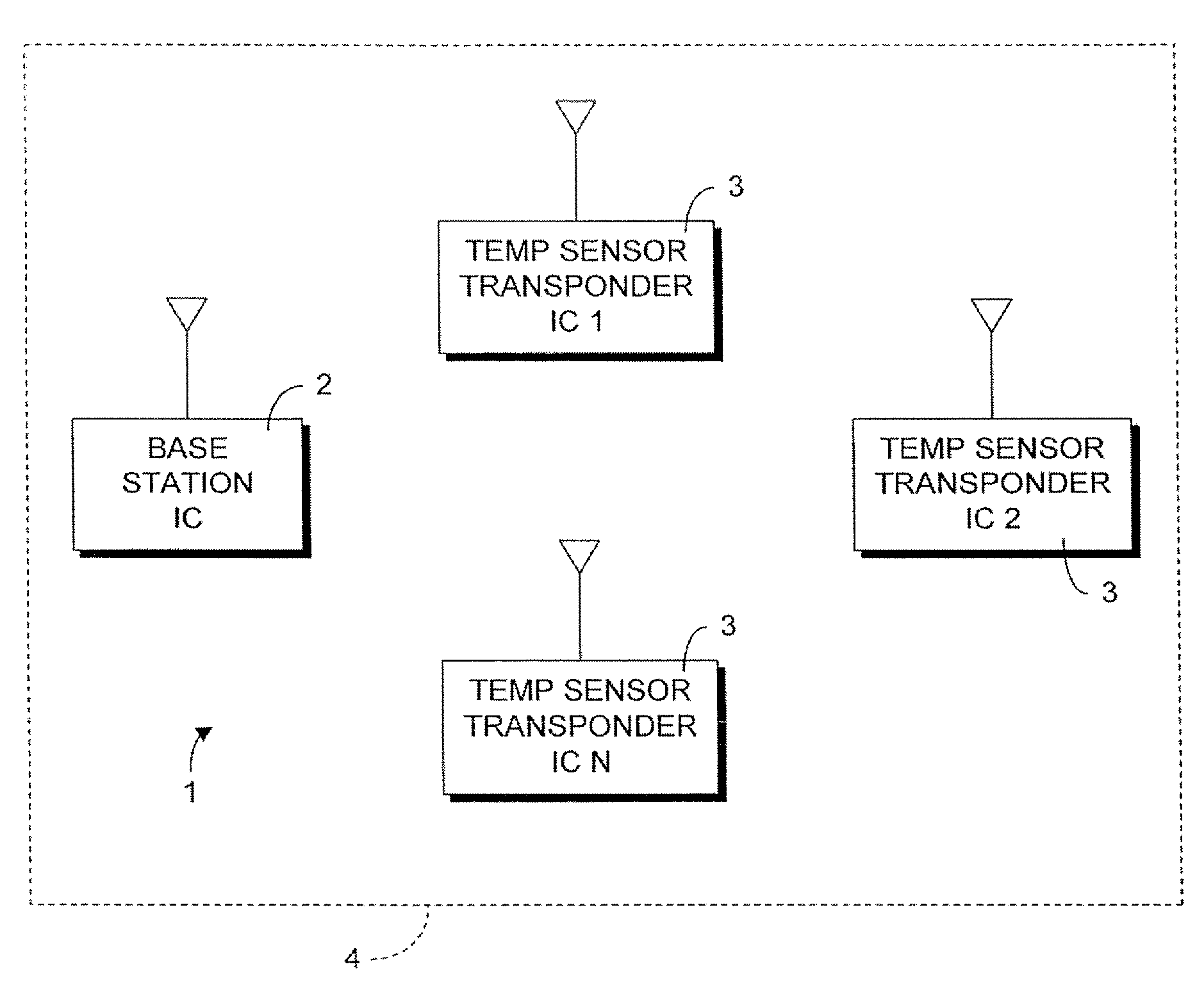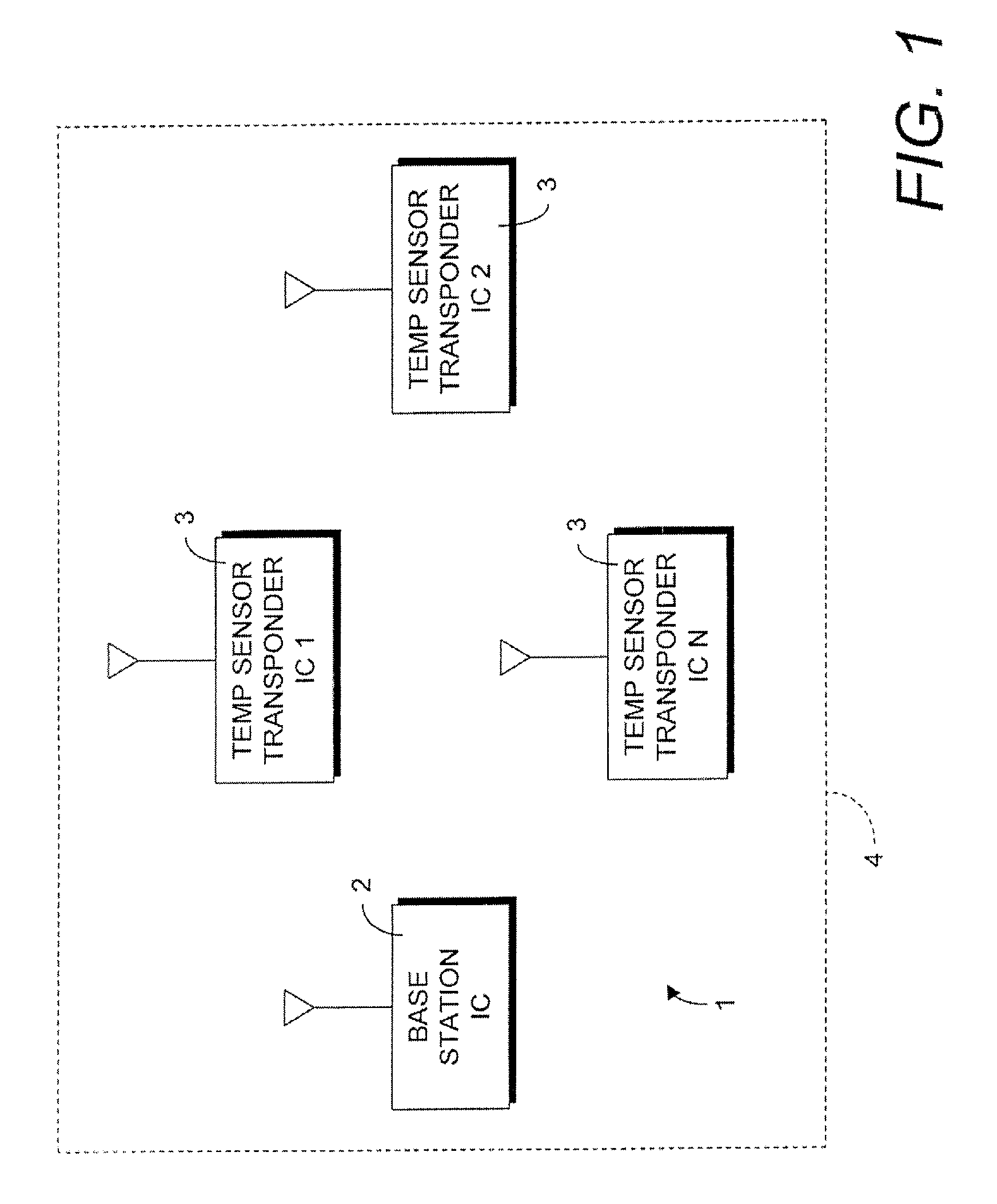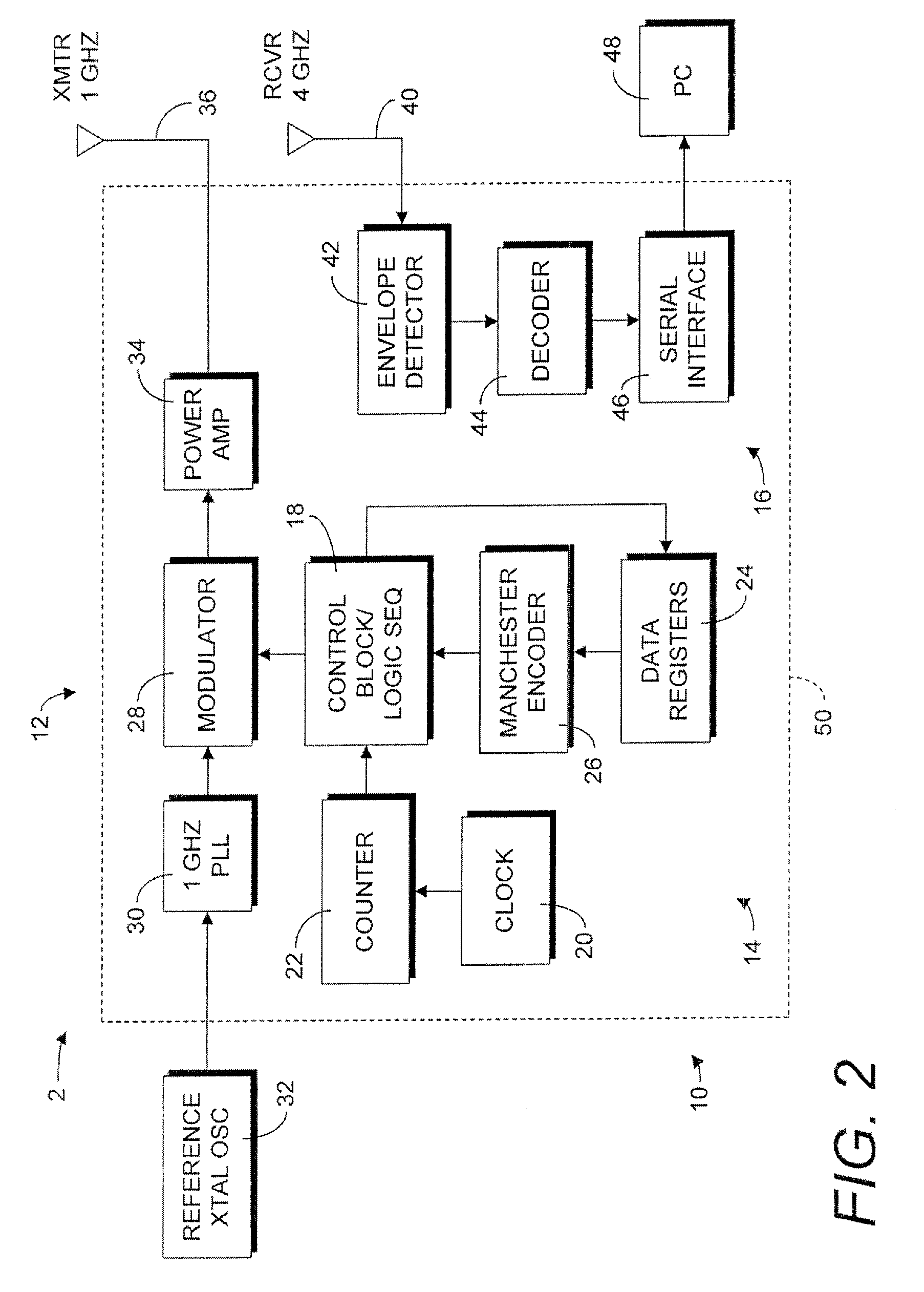Wireless temperature sensor network
a temperature sensor and wireless technology, applied in the field of wireless networks, can solve the problems of multi-path problems, unsuitable for space platforms, known types of passive transponders, etc., and achieve the effect of sufficient operating power and reliably responding to the query signal
- Summary
- Abstract
- Description
- Claims
- Application Information
AI Technical Summary
Benefits of technology
Problems solved by technology
Method used
Image
Examples
Embodiment Construction
[0020]As required, detailed embodiments of the present invention are disclosed herein; however, it is to be understood that the disclosed embodiments are merely exemplary of the invention, which may be embodied in various forms. Therefore, specific structural and functional details disclosed herein are not to be interpreted as limiting, but merely as a basis for the claims and as a representative basis for teaching one skilled in the art to variously employ the present invention in virtually any appropriately detailed structure.
[0021]Referring to the drawings in more detail, the reference numeral 1 generally designates an embodiment of a wireless temperature sensor network according to the present invention. The network 1 generally includes a base station unit 2 and a plurality of temperature sensor transponder units 3. In general, the transponder units 3 are passive and derive operating power from a querying signal transmitted by the base station 2. The transponder units 3 are indi...
PUM
 Login to View More
Login to View More Abstract
Description
Claims
Application Information
 Login to View More
Login to View More - R&D
- Intellectual Property
- Life Sciences
- Materials
- Tech Scout
- Unparalleled Data Quality
- Higher Quality Content
- 60% Fewer Hallucinations
Browse by: Latest US Patents, China's latest patents, Technical Efficacy Thesaurus, Application Domain, Technology Topic, Popular Technical Reports.
© 2025 PatSnap. All rights reserved.Legal|Privacy policy|Modern Slavery Act Transparency Statement|Sitemap|About US| Contact US: help@patsnap.com



